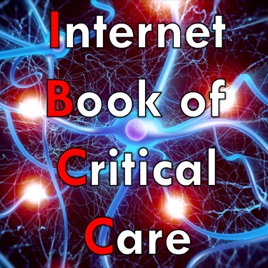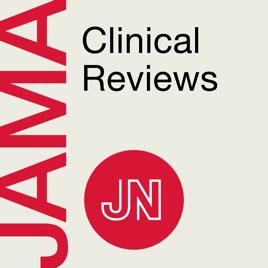
Advertise on podcast: EM Clerkship
Rating
4.9 from
Country
This podcast has
227 episodes
Language
Publisher
Explicit
Yes
Date created
2016/03/20
Average duration
27 min.
Release period
16 days
Description
The purpose of this podcast is to help medical students crush their emergency medicine clerkship and get top 1/3 on their SLOE. The content is organized in an approach to format and covers different chief complaints, critical diagnoses, and skills important for your clerkship.
Podcast episodes
Check latest episodes from EM Clerkship podcast
Pre-Eclampsia (Deep Dive MW R17)
2024/02/16
Hypertensive Emergencies of Pregnancy
PreEclampsia, Eclampsia, HELLP syndrome
Diagnosis: BP >140/90 plus end organ dysfunction
* Acute Kidney Injury
* Proteinuria
* Thrombocytopenia
* Transaminitis
* Hemolysis
* Pulmonary Edema
* Cerebral Edema / Hemorrhage
* Headache refractory to tylenol
* Visual Changes
* RUQ Pain not attributable to another diagnosis
Treatment
* Loading Dose: IV Magnesium 4-6g over 20-30 min OR 5g IM in each buttock
* Maintenance Dose: 1g/hr IV
* Antihypertensives (goal 20% reduction): Labetalol, Nicardipine, Hydralazine
* Delivery of fetus and placenta
more
Round 17 (MW) Headache
2024/02/01
You are working at Clerkship General when the next chart is put in your rack. It’s a 41-year-old female with a chief complaint of headache.
Initial Vitals:
HR: 56
BP: 172/93
Temp: 98.8F
RR: 18
O2: 97%
Critical Actions:
* Check a Blood Glucose
* Diagnose Preecclampsia/Ecclampsia
* Administer Magnesium
* Treat the Hypertension
* Discuss with OBGYN and Admit
more
Pulmonary Embolism (Deep Dive MW R16)
2024/01/17
Diagnosing PE:
Step 1: Consciously consider the diagnosis
Step 2: Risk Stratify into low, intermediate, and high risk
Step 3: Choose appropriate testing based on pre-test probability
Classification of PE
* High Risk/Massive PE: Hemodynamic Instability
* Intermediate Risk/Submassive PE: Right Heart Strain without instability ; or PESI Class 3+
* Low Risk/Non-Massive PE: Everything else (no instability, no heart strain, PESI Class 1-2)
Treatment of PE
* High Risk/Massive PE: Thrombolytics and often thrombectomy
* Intermediate Risk/Submassive PE: Heparin and sometimes intervention
* Low Risk/Non-Massive PE: Either discharge with DOAC or admit with heparin
more
Round 16 (MW) Leg Pain
2024/01/01
You are working at Clerkship General when you overhear the base command radio. “Clerkship General. We have a 57 year-old female coming in for leg pain. She just had surgery at your hospital. Her blood pressure is 85/50. We’ll be there in 5 minutes.”
Initial Vitals:
HR: 122
BP: 75/40
Temp: 100.1
RR: 24
O2: 74%
Critical Actions:
* Obtain full set of vital signs
* Treat the patient’s pain
* Diagnose PE without imaging
* Stabilize patient prior to imaging
* Transfer the patient for thrombectomy
more
Shock (Deep Dive R15 MW)
2023/12/17
Shock – A state of deranged physiology characterized by systemic, widespread hypoperfusion
* Hypovolemic Shock
* Hemorrhage
* Volume Loss (vomiting/diarrhea, dehydration)
* Cardiogenic Shock
* ACS, Myocarditis, CHF, Valve failure, Endocarditis, etc
* Obstructive Shock
* Massive PE, Tension Pneumothorax, Cardiac Tamponade
* Distributive Shock
* SIRS (Septic Shock, Pancreatitis, Severe Burns)
* Anaphylactic Shock
* Neurogenic Shock
* Adrenal Crisis
more
Round 15 (MW) MVA
2023/12/02
You are working at Clerkship General when you hear and EMS call on the radio. “Clerkship General, we are activating a trauma alert. We are bringing you a 33 year old male from a high-speed single vehicle collision”
Initial Vitals:
HR: 65
BP: 88/50
Temp: 97.0F
RR: 20
O2: 96% Room Air
Critical Actions:
* Apply Cervical Collar
* Treat the Patient’s Pain
* Give Antibiotics for Open Fracture
* Identify and Prioritize Etiologies of Shock in Trauma
* Start Vasopressors for Neurogenic Shock
more
Pediatric Septic Arthritis (Deep Dive R14 MW)
2023/11/15
* Differential
* Traumatic causes: non-accidental trauma, fracture, dislocation, sprain, strain, tendonitis, osgood schlatter
* Non-traumatic causes: septic arthritis, transient synovitis, osteomyelitis, SCFE, LCP disease, rheumatologic disease, bony tumors
* Work-up
* XRay
* Labs to evaluate for septic arthritis – CBC BMP ESR CRP
* Kocher Criteria
* Non-weight bearing
* Fever >38.5C
* ESR >40
* WBC >12
* Kocher Criteria Statistics
* 0 points: 0.2% (or 2% in prospective studies)
* 1 point: 3% (or 9% in prospective studies)
* 2 points: 40%
* 3 points:93%
* 4 points: 99%
* Septic Arthritis DX
* >50,000 WBC
* Age 0-3mo : group B strep
* Age 3mo – 12 years: Staph Aureus
* Age 12-18 years: Gonorrhea
* Sickle Cell Disease: Salmonella
more
Round 14 (MW) Leg Pain
2023/11/01
You are working a beautiful sunny day in Pennsylvania when the next chart gets put in your rack. It is a 2 year-old male with a leg injury.
Initial Vitals:
HR: 112
BP: 97/67
Temp: 99.2F
RR: 20
O2: 97% Room Air
Critical Actions:
* Consider Non-Accidental Trauma
* Evaluate for Septic Arthritis
* Treat the Childs Pain
* Diagnose Lyme Disease
* Prescribe Antibiotics (Avoid Doxycycline)
more
Asthma (Deep Dive R13 MW)
2023/10/15
* Focused Physical Exam
* Tachypnea and Hypoxemia
* Able to speak in complete sentences
* Accessory muscle use/retractions
* Moving air or quiet on auscultation
* Basic Treatment Algorithm
* Albuterol Inhaler
* Albuterol/Ipratropium Nebulized (Duoneb)
* Steroids
* IV Magnesium
* Non Invasive Ventilation (CPAP or BiPAP)
* Decreases Work of Breathing
* Epinepherine
* Less Common Treatments
* Benzodiazepines
* Ketamine
* Heliox
* Intubation (Last resort)
* Use a large ETT (8.0)
* Increase the Expiratory Time
* “Permissive Hypercapnea”
* Appropriate ventilator management of asthma frequently results in mild hypercapnia and respiratory acidosis. IT’S OK
* Air Trapping
* Results in decreased preload, obstructive shock and pneumothorax
* Suspect with high airway pressures and when waveform doesn’t return to zero (see media)
* Treat by briefly unhooking ventilator and gently pressing on the patient’s chest to get out the trapped air
* Ventilator Settings
* Decrease the respiratory rate (ex 10)
* Increase the tidal volume (although some hypercapnia is permitted)
* Increase I:E ratio (1:4 or greater)
more
Round 13 (MW) Respiratory Distress
2023/10/01
You are working at Clerkship General when you hear an EMS call: “Clerkship General, we are bringing you a young female in respiratory distress. ETA 2 minutes”
Initial Vitals:
HR: 123
BP: 142/78
Temp: Unknown
RR: 36
O2: 97% (NonRebreather)
Critical Actions:
* Give Albuterol, Steroids, and Magnesium
* Give either Epinephrine or Terbutaline
* Post Intubation Checklist: Sedation, Tubes, and Xray
* Choosing Appropriate Vent Settings
* Allow permissive hypercapnia
more
Organophosphate Poisoning (Deep Dive R12 MW)
2023/09/16
Introduction
* Used as pesticides
* Used as weapons (nerve agents)
* Sarin Gas, VX Gas, Novichok
* Transdermal, Inhalation, Ingestion
Clinical Presentation
* Muscarinic Activation (Dumbels Mnemonic)
* Defication
* Urination
* Myosis
* Bradycardia, Bronchospasm, and Bronchorrhea
* “The Killer B’s”
* Emesis
* Lacrimation
* Salivation and Sweating
* Nicotinic Activation
* Muscle weakness and paralysis
* CNS Activation
* Respiratory Depression
* Altered Mental Status
* Seizures
Treatment
* Atropine
* Reverses Dumbels
* Keep giving and doubling the dose until brochorrhea and bradycardia resolve
* Pralidoxime
* Only works before ‘aging’ occurs
* Diazepam
* Stops the seizures
more
Round 12 (MW) Respiratory Distress
2023/09/01
You are working at Clerkship General when you hear an EMS call on the radio. “Clerkship General. We are bringing you an unresponsive 6-year-old female found foaming at the mouth by her babysitter. ETA 2 minutes.”
Initial Vitals:
BP: 125/80
HR: 62
RR: 34
O2: 81% (Non Rebreather)
Critical Actions:
* Grab the Broslow!
* Fingerstick Glucose
* Choose Endotracheal Tube Size
* Administer Atropine until bronchial secretions stop
* Pralidoxime
more
Podcast reviews
Read EM Clerkship podcast reviews
WNCJeep
2023/11/13
I love you guys
I love your podcasts they have helped me so much in my work and are perfect for commuting to hospital. High yield is an understatement.
TC5656
2023/03/04
Awesome podcast
These episodes are short, sweet, to the point and valuable. I listen to these podcasts on my way to work, on my way home from work, and they are alway...
more
tc9341
2023/02/22
Love it
This podcast is invaluable for me as a paramedic. Getting to know the likely clinical course for these different illnesses is awesome.
Bekksted
2023/02/12
Favorite!
I love this podcast. It’s as entertaining as it is educational. I’m an ER nurse and this podcast has been so educational in teaching me what to antici...
more
tnualh2023
2022/11/17
My favorite!
EM Clerkship has been my go to throughout my clinical year of PA school. I started listening during my ER rotation and it was so helpful and I just co...
more
BriannaShelleen
2022/11/01
AMAZING!
I am about to venture off to clinical year of PA school in 2 short months and I wish I had found this podcast sooner. I cannot say enough good things ...
more
Emmy B99
2022/08/27
GREAT
This is an awesome adjunct to my clinical training during PA school. I love the patient case episodes and the follow up episodes that go in depth abou...
more
abbull_3000
2022/03/15
Awesome Content
This podcast is great for learners of all levels. I used it as a PA student and at running through the episodes again as I enter an APP EM residency. ...
more
Ahimsa739
2022/02/24
Amazing content!
This podcast is truly a gem! The information is clinically relevant & the hosts are both very engaging.
12345233
2022/02/04
A gem
Honestly so helpful as an MS3. Brief episodes (aka you can actually have the bandwidth to pay attention) and covers the highest yield pearls.
Podcast sponsorship advertising
Start advertising on EM Clerkship & sponsor relevant audience podcasts
You may also like these medicine Podcasts

4.8
364
289
The Doctor's Kitchen Podcast
Dr Rupy Aujla

4.7
471
302
Emergency Medicine Cases
Dr. Anton Helman

4.8
344
391
The Thyroid Fixer
Dr. Amie Hornaman

4.9
624
136
The Internet Book of Critical Care Podcast
Adam Thomas & Josh Farkas

4.8
634
217
AFP: American Family Physician Podcast
American Academy of Family Physicians

4.8
1120
208
Psychiatry & Psychotherapy Podcast
David Puder, M.D.

4.6
231
104
Psychopharmacology and Psychiatry Updates
Psychopharmacology Institute

5
87
38
Born to Heal: Holistic Healing for Optimal Health
Dr. Katie Deming, M.D. | Conscious Oncologist

4.6
157
1099
Pharmacy Podcast Network
Pharmacy Podcast Network

4.5
412
353
JAMA Clinical Reviews
JAMA Network



